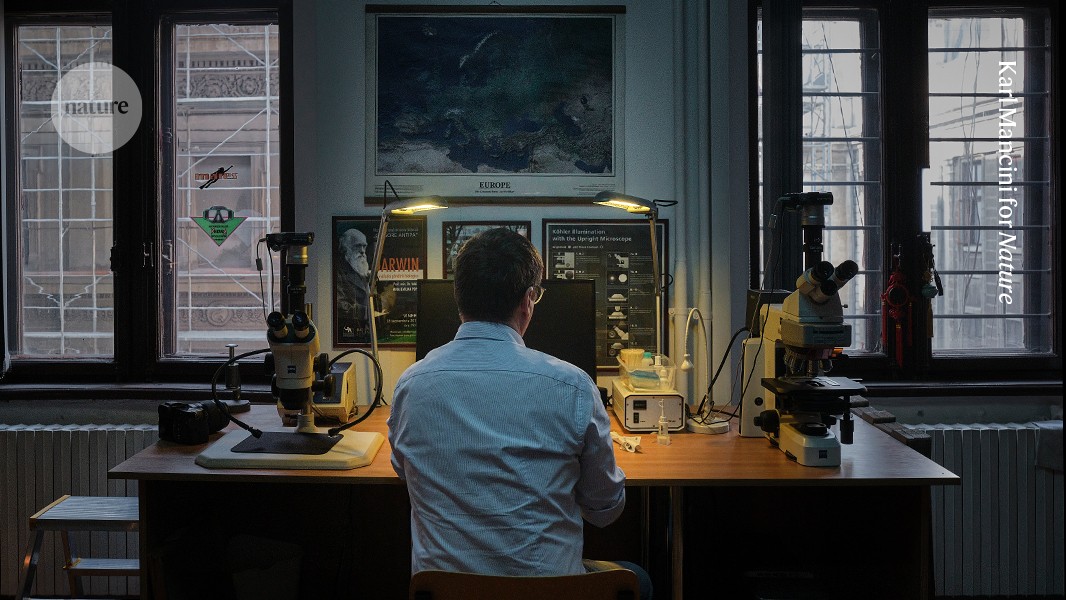How I find and explain plant fossils in Romania

From mines to metro stations, Mihai Emilian Popa analyses traces of the distant past
“My office at the University of Bucharest, photographed here, has a library that I’ve been building since 1990, when I began studying palaeobotany. Until 1989, when the Romanian dictator Nicolae Ceaușescu was shot, exchanges with foreign countries were very difficult — so, in the 1990s, I had a lot of catching up to do to secure palaeontological literature. Now my library has about 9,000 titles, mainly about plant systematics. More than half of the library is not available online yet, because palaeobotany is a narrow field of research, and you have to rely on nineteenth-century books and articles.
In 1990, I left Bucharest with my backpack and my boots to work as a coal miner in the southern Carpathian Mountains. I began doing fieldwork, collecting samples such as fossils, rocks and especially coal from deep exploitation chambers in these coal mines.
I really needed a base for gathering and studying samples. Eventually, in 2006, I bought a house in Bigar, a Czech-speaking village in Romania that was surrounded by small former coal mines. A coal mine is so interesting, because you always find fossil plants there. This Bigar site became a field laboratory. Each year, I teach a field course there on geological mapping. I now spend about three months a year in the field.
Enjoying our latest content?
Login or create an account to continue
- Access the most recent journalism from Nature's award-winning team
- Explore the latest features & opinion covering groundbreaking research
or
Sign in or create an account Continue with Google
Continue with Google
Nature 637, 1276 (2025)
doi: https://doi.org/10.1038/d41586-025-00224-x
This interview has been edited for length and clarity.
This story originally appeared on: Nature - Author:Christine Ro


















